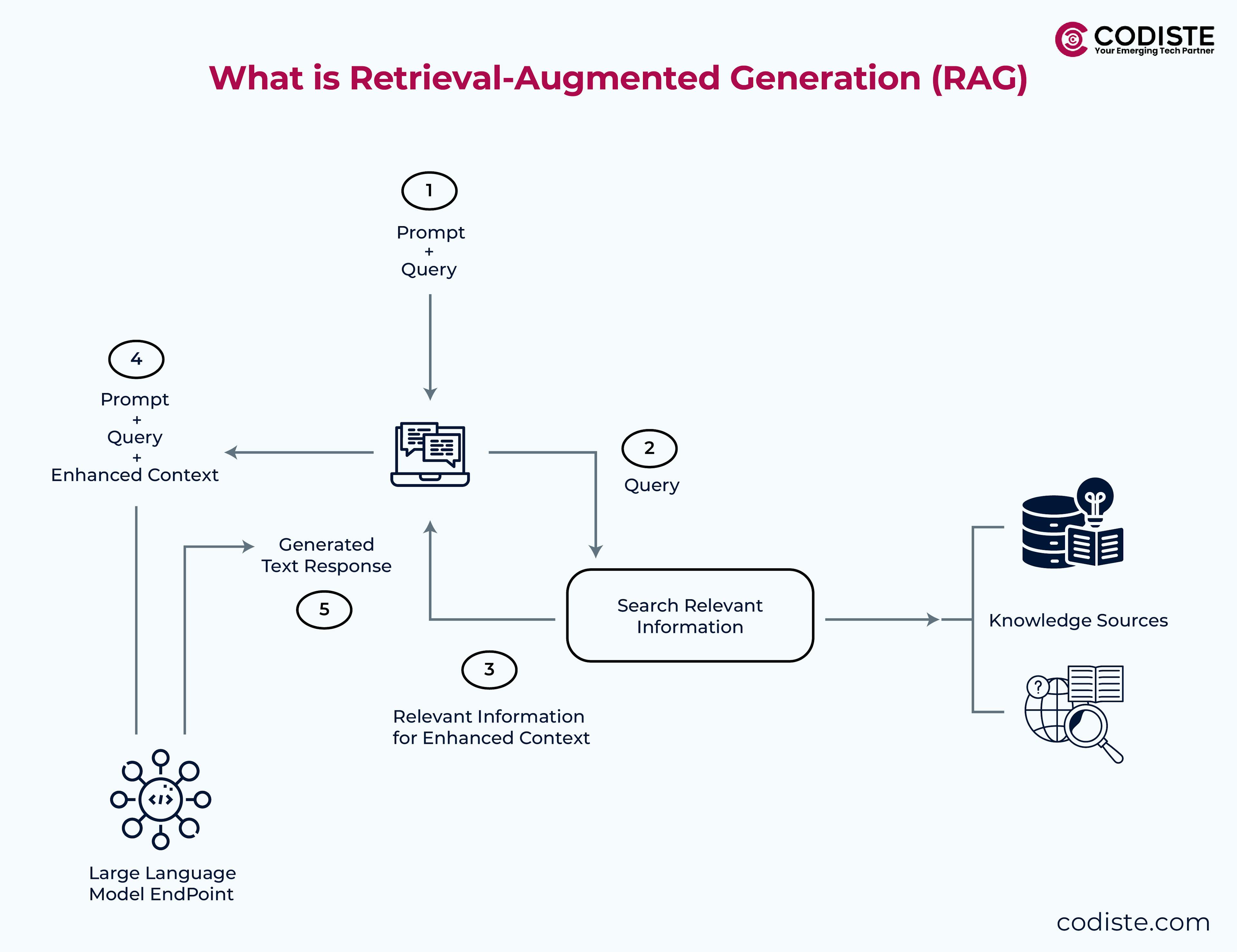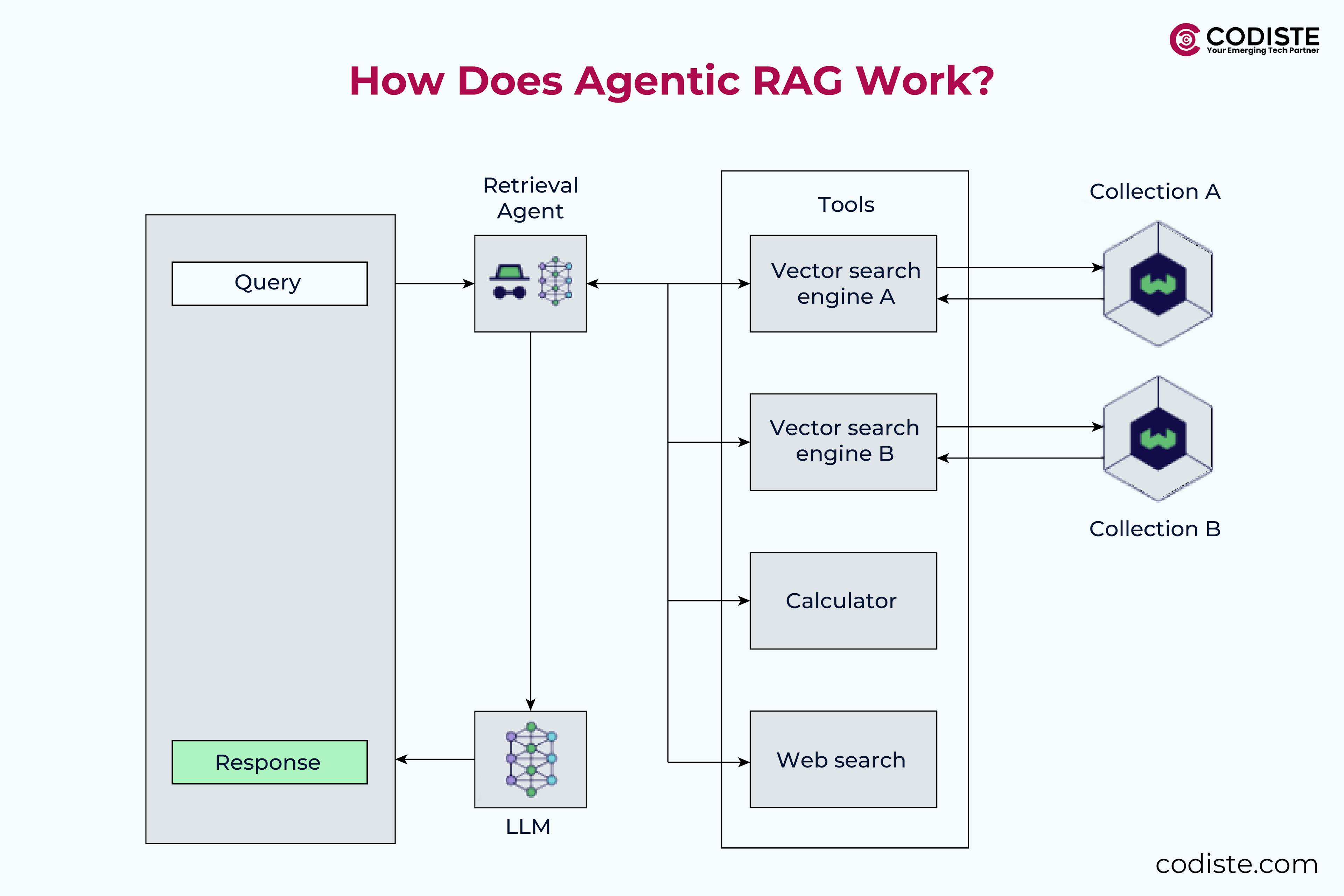
Is Agentic RAG Worth the Investment? Agentic RAG Pricing and ROI Breakdown
Artificial intelligence has made sure that modern businesses are evolving and open to a more utilitarian approach as these entities are increasingly turning to advanced solutions that can elevate business processes and automate workflows. Out of these lots, one is the retrieval agent known as Agentic Retrieval-Augmented Generation (RAG).
To stay competitive, businesses combine the precision of retrieval systems with autonomous decision-making; agentic RAG transforms how organizations process data, interact with customers, and innovate.
AI agent development has shown how agents can be utilized but also has the cost factor looming over, and the same can be said about agentic RAG development. Due to its significant upfront costs, many leaders wonder: Is this technology worth the investment?
Let’s break down Agentic RAG pricing models, the costs involved, potential ROI, and strategic value to help you decide. But before we proceed, let’s take a look at a few important and basic concepts.
What is Agentic RAG?
Agentic RAG is a progressive AI framework that perfectly integrates retrieval mechanisms with generative models to produce precise and relevant outputs, unlike traditional generative AI models. Agentic RAG enables AI agents to access and pull from external knowledge sources before generating content. This ensures that the responses are not only accurate but also informed by the most up-to-date and relevant information available.
Before we move further into the nitty gritty of Agentic RAG pricing models, let's take a look at what constitutes RAG.
Fundamentals of RAG
Retrieval-augmented generation (RAG) leverages external knowledge sources to help generative AI function. At its core, RAG fetches and incorporates factual or contextual information to enhance the accuracy of responses, effectively addressing the limitations of traditional LLMs that may lack real-time updates or external knowledge.

What is RAG?
The evolution of RAG can be categorized into three distinct phases:
- Naive RAG: The initial phase where basic retrieval mechanisms are integrated with generative models.
- Advanced RAG: This phase introduces more sophisticated retrieval techniques and better integration with generative models.
- Modular RAG: The most advanced phase, where modular components allow for greater flexibility and customization in how retrieval and generation processes are combined.
RAG systems provide more accurate and contextually relevant responses by leveraging external knowledge sources, making them invaluable for applications that require up-to-date information and nuanced understanding.
AI Agents in Agentic RAG
AI agents are computational entities designed to perceive and respond to their environment using intelligent processes. When a multi-agent architecture like Agentic RAG is involved, these agents play a crucial role in tasks that involve sequential decision-making, flexibility, and planning. They utilize Large Language Models (LLMs) as decision-makers to determine the next best action, allowing them to take multiple non-linear steps to achieve a specific goal.

One of the standouts features of AI agents in Agentic RAG is their ability to function independently. They can generate responses based solely on input queries without relying on external dependencies, making them highly versatile and efficient.
Further below, we take a look at the agentic RAG architecture as an overview to understand its functionality.
Agentic RAG Architecture
The architecture of Agentic RAG systems is designed to combine the strengths of RAG and AI agents, creating a robust and versatile framework for LLM-powered applications. This architecture involves incorporating one or more types of AI agents into RAG systems, enabling the creation of more powerful and adaptable solutions.
Agentic RAG systems can include various types of AI agents, such as:
- Routing Agents: These agents determine the best path for data retrieval and processing.
- Query Planning Agents: They plan and optimize the sequence of queries to retrieve relevant documents.
- ReAct Agents: These agents combine reasoning and acting capabilities to validate and use the retrieved context effectively.
- Plan and Execute Agents: They create detailed plans and execute them to achieve specific goals.
These agents work together to retrieve information from various sources, including vector databases and other tools.
How and Where to Implement Agentic RAG for Maximum Impact
Unlike traditional RAG systems, which rely on static workflows, Agentic RAG dynamically adapts to user needs, delivering highly accurate, context-aware responses. Agentic RAG’s AI framework merges retrieval mechanisms (fetching relevant data from vast datasets) with autonomous agents capable of reasoning, learning, and acting on that data. This technology is ideal for applications requiring:
- Real-time data analysis (e.g., customer support, financial forecasting).
- Personalized user interactions (e.g., chatbots, recommendation engines).
- Scalable solutions for complex queries (e.g., legal research, healthcare diagnostics).
An agentic RAG system further enhances these capabilities by incorporating a retrieval component along with AI agents, enabling more adaptive, accurate, and scalable data retrieval and reasoning.
Business Process Automation Made Easy with Agentic RAG, Try Yours Now!
The Cost Breakdown of Implementing Retrieval Augmented Generation
Before diving into ROI, it’s critical to understand the investment required. Here’s a detailed cost analysis:
Implementing Agentic RAG involves setting up a rag pipeline, which incorporates various agents to enhance information retrieval and response generation.
The initial setup costs can be high, especially when considering the integration of relevant data sources. These sources are crucial for ensuring that the RAG pipeline utilizes optimal information to enhance query handling and overall system performance.
1. Implementation Costs
- Hardware & Infrastructure: Cloud hosting on platforms like AWS or Azure typically costs $500–$2,000/month for standard instances. High-performance setups with GPUs for intensive tasks can exceed $5,000/month. Additionally, incorporating a vector database into your Retrieval-Augmented Generation (RAG) framework can add to the infrastructure costs, as it is essential for retrieving relevant documents based on user queries.
Example: A mid-sized e-commerce company might spend $1,500/month on cloud infrastructure to power its customer service chatbot.
Engineering Talent: Hiring skilled AI engineers averages $150,000/year per engineer. A team of three could total $450,000/year, covering system design, integration, and maintenance. Managing a knowledge base to ensure optimal data retrieval and relevance also requires specialized skills, contributing to the overall engineering costs.
2. Operational Costs
- API Usage: Third-party tools like ElasticSearch or Pinecone for retrieval cost $0.01–$0.05 per query. At 1 million monthly user queries, this adds $10,000–$50,000/month.
- Data Storage: Storing 100 TB of data on AWS S3 costs ~$2,300/month. Preprocessing and cleaning data (e.g., removing duplicates, formatting) add $1,000–$5,000/month in labor.
- Monitoring & Maintenance: Tools like LangSmith or Prometheus for performance tracking cost $500–$2,000/month. Utilizing multiple agents can further enhance the efficiency and complexity of these systems, potentially impacting ongoing costs.
3. Licensing & Scalability
- Software Licenses: Proprietary frameworks or NLP libraries (e.g., spaCy, Hugging Face) may charge $5,000–$15,000/year.
- Scalability: While Agentic RAG systems adapt dynamically, scaling to handle 10x more queries could require 20–30% more infrastructure costs, far lower than traditional systems’ linear cost increases. Such a system allows agents to autonomously navigate multiple paths and utilize external knowledge sources, breaking away from linear processes and incorporating loops for self-correction.
How Agentic RAG Delivers Value with ROI
The true power of Agentic RAG lies in its ability to drive measurable returns by integrating relevant context. Here’s how:
1. Operational Efficiency
- Automation: By handling routine tasks (e.g., answering FAQs, generating reports), an AI agent within Agentic RAG can boost employee productivity by 30–40%. For a 100-person team, this translates to $1.2M–$1.6M/year in saved labor costs (assuming a $50/hour average wage).
- Reduced Errors: A healthcare provider using Agentic RAG for patient data analysis reduced diagnostic errors by 25%, saving $500,000/year in liability costs.
2. Enhanced Decision making
- Real-Time Insights: A financial firm using Agentic RAG for market analysis accelerated report generation from 8 hours to 15 minutes, enabling faster trades and $2M+ in annual revenue gains.
- Predictive Analytics: Retailers leveraging Agentic RAG for demand forecasting cut excess inventory by 20%, freeing up $300,000/year in working capital.
- Enhanced Decision-making: Healthcare providers using Agentic RAG systems benefit from improved diagnostics by integrating multiple external knowledge bases. This approach enhances the accuracy and relevance of responses, leading to better patient outcomes and more informed decision-making.
3. Customer Satisfaction
- 24/7 Support: A customer support company deployed an AI voice agent named Dialora, resolving 90% of tier-1 queries without human intervention. By refining and enhancing the user query process, customer satisfaction (CSAT) scores rose by 35%, reducing churn by 15%.
- Personalization: E-commerce platforms using Agentic RAG for recommendations saw a 22% increase in average order value through hyper-personalized product suggestions.
4. Innovation & Competitive Edge with Multi-agent Systems
- Faster R&D Cycles: A biotech firm reduced drug discovery timelines by 40% using Agentic RAG to analyze research papers and clinical trials.
- Market Agility: Companies adopting Agentic RAG outpaced competitors in launching new features, capturing 15–20% more market share in their niches by leveraging the RAG system to enhance information retrieval and response generation through various AI agents.
Is Agentic RAG Worth the Investment?
The answer is entirely subjective and truly depends on your organization’s needs:
If your company frequently deals with complex queries and requires highly accurate and versatile responses, investing in Agentic RAG could be beneficial. The integration of intelligent agents within RAG pipelines enhances the system's ability to manage queries, select appropriate tools, and adaptively retrieve data from multiple sources, leading to improved response quality.
For Large/Established Enterprises
- Worth It: If you handle high-volume, complex queries (e.g., legal, healthcare, finance), the ROI from efficiency gains and risk mitigation justifies the costs. Implementing an agentic RAG system can significantly enhance scalability and adaptability, making data retrieval and reasoning more accurate and efficient.
- Use Case: A global bank saved $8M/year by automating compliance checks with Agentic RAG.
For SMEs
- Start Small: Focus on high impact use cases like customer support or sales automation. Ensure that your pilot projects utilize relevant data sources to enhance the efficiency and effectiveness of the system. Pilot projects can cost $50,000–$100,000 and deliver ROI within 6–12 months.
Key Considerations for Relevant Data Sources
- Data Quality: Garbage in, garbage out. Ensure clean, structured data for optimal performance and accurate responses.
- Change Management: Train teams to collaborate with AI, not compete against it.
- Ethics & Security: Implement guardrails to prevent bias and protect sensitive data.
Conclusion
Agentic RAG isn’t just another tech fad! It’s a global strategic phenomenon coming as an advantage for businesses ready to harness AI’s full potential. By integrating relevant context from external knowledge sources, Enterprises opting for agentic RAG without giving heed to agentic RAG pricing models will certainly enhance the performance of LLM-powered applications by integrating external tools, reducing inaccuracies and improving user query results. While initial costs for agentic RAG development are steep, the long-term benefits in efficiency, customer loyalty, and innovation make it a compelling investment.
If you're planning to build smart AI agents, Codiste can help. We specialize in agentic RAG development and have hands-on experience in creating intelligent, tool-integrated AI systems that deliver real value.




